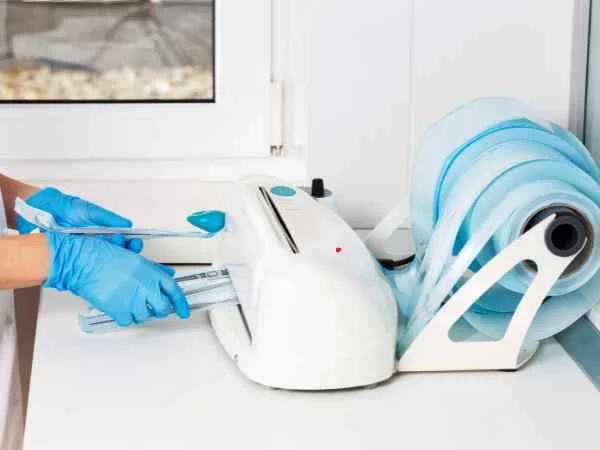Sterile packaging plays a critical role in healthcare settings, ensuring the safety and integrity of medical In order to guarantee the integrity and safety of pharmaceuticals, medical equipment, and gadgets, sterile packaging is essential in healthcare settings. To avoid infections and protect patient health, sterility must be maintained on all surgical tools and implanted devices.
Infection Prevention and Control:
Sterile packaging is mostly used in healthcare to stop the spread of dangerous bacteria and prevent infections. Sterile medical equipment and supplies are necessary to reduce the possibility of introducing germs and resulting in healthcare-associated infections (HAIs) when they come into touch with patients’ bodies or bodily fluids. These objects are shielded from contamination throughout handling, storage, and transportation by sterile packaging, which keeps them that way until they are needed. Healthcare institutions may improve patient outcomes and save healthcare costs related to treating HAIs by lowering the frequency of surgical site infections, bloodstream infections, and other problems by ensuring sterility throughout the supply chain.
Preservation of Product Efficacy and Safety:
When it comes to maintaining the safety and effectiveness of pharmaceuticals, biologics, and medical devices, sterile packaging is essential. Numerous drugs and medical supplies are susceptible to deterioration over time due to environmental elements, including light, moisture, and oxygen. These products are protected from environmental risks and outside contaminants by sterile packaging, which preserves their integrity and guarantees their safety and efficacy until they are administered to the patient. Furthermore, by halting microbiological development and chemical deterioration and lowering the possibility of unfavorable reactions and treatment failures, sterile packaging contributes to the prolonged shelf life of medical supplies. Sterile packaging improves the overall quality of healthcare delivery and helps to improve patient outcomes by maintaining the effectiveness and safety of products.
Regulatory Compliance and Quality Assurance:
Sterile healthcare packaging is essential to achieving regulatory norms and quality assurance criteria in the healthcare industry, which are non-negotiable. To guarantee the safety and effectiveness of pharmaceuticals and medical devices, regulatory bodies like the European Medicines Agency (EMA) and the Food and Drug Administration (FDA) have strict guidelines for the production, labeling, and packaging of these goods. To comply with regulatory rules, sterile packaging must fulfill precise requirements involving integrity testing, sterility assurance, and packaging materials. Healthcare institutions must also follow Quality Management Systems (QMS) and Good Manufacturing Practices (GMP) to ensure high levels of safety and quality throughout the manufacturing and distribution process. Healthcare businesses show their dedication to patient safety and regulatory compliance by putting into practice sterile packing procedures that satisfy legal criteria.
Surgical and Procedural Efficiency:
Surgical and procedural efficiency is enhanced by sterile packing, which gives medical personnel contaminated-free, ready-to-use tools and materials. Time is of importance in operating rooms and procedural areas, and any delays or interruptions brought on by tainted instruments or equipment may jeopardize the safety of patients and the outcome of procedures. During operations, sterile packaging ensures that tools and supplies are arranged, wrapped, and sanitized so that they can be easily identified and accessed. This improves surgical efficiency, decreases the possibility of mistakes, and simplifies workflow, freeing up healthcare professionals to concentrate on providing the best possible patient care rather than worrying about contamination or sterility. Furthermore, sterile packaging reduces the amount of time and resources required for the reprocessing and resterilization of instruments while upholding the strictest sterility and safety regulations.
Patient Trust and Confidence:
By informing patients that their safety and well-being are top priority, sterile packaging helps to foster patient trust and confidence in the healthcare system. Patients believe that medical professionals will take all necessary steps to avoid infections and guarantee the sterility of medical materials and equipment when they undergo medical procedures or get treatment. Sterile packaging communicates professionalism, expertise, and attention to detail while acting as a visual representation of this dedication to patient safety. When sterile packing rules are followed, patients are more likely to have faith in their healthcare professionals and the quality of treatment they get. Sterile packaging improves healthcare outcomes by strengthening connections between patients and providers and promoting trust and confidence among patients.
Conclusion
In healthcare settings, sterile packaging is essential because it promotes patient confidence, regulatory compliance, product safety, infection control, and procedural efficiency. Healthcare companies may guarantee the safety, effectiveness, and integrity of medical items and equipment, leading to improved patient outcomes and efficient delivery of high-quality healthcare services, by upholding strict packaging requirements and preserving sterility throughout the supply chain.

